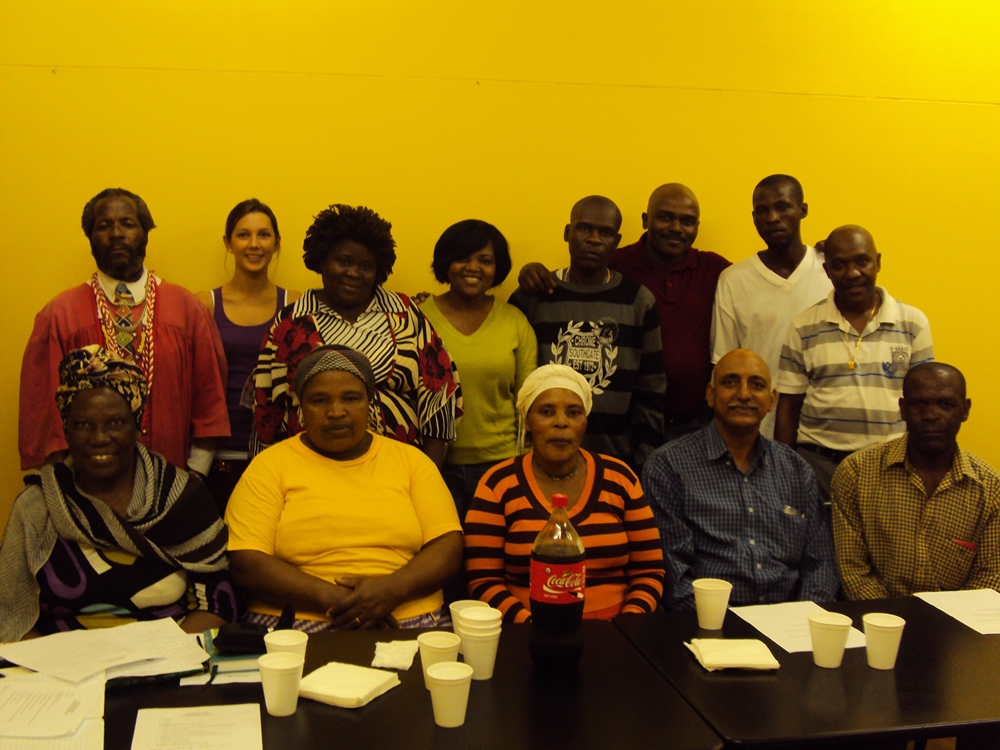Tasmi Quazi
The unique attribute of Asiye eTafuleni (AeT) within the “informal” economy sector is believed to be the deliberate integration of urban planning and design expertise coupled with comprehensive social facilitation services. The prioritisation of the grounded social facilitation seeks to place AeT at the intersection of rights based consciousness, responsive urban management and innovative urban design.

The core staff of AeT has a valuable combination of skills and experience, comprising Richard Dobson (Project Leader), Patrick Ndlovu (Senior Project Officer), Phumzile Xulu (Project Officer) and Tasmi Quazi (Research Officer). AeT is therefore a compact team with core fundamental skill-sets in design, urban management, research and social facilitation which is divided into two work streams, the technical and social facilitation disciplines.
This is augmented by expertise from informal workers themselves on specific projects, other relevant fields (locally and internationally) and though partnerships with city government departments. For instance, AeT Board members comprise of informal workers, professionals and academics in various fields including economics, law and development studies, bringing a range of complementary skills and insights.

Furthermore, the augmented expertise has come from interns from the informal trading community and various educational backgrounds from fields mentioned above, and including anthropology, tourism and psychology. At an international level, AeT has been a sub-grantee of WIEGO (Women in Informal Employment: Globalizing & Organizing), and as an Inclusive Cities partner, a part of a wider global collaboration:
- WIEGO: www.wiego.org
- SEWA: www.sewa.org
- AVINA: www.avina.net
- StreetNet: www.streetnet.org.za
- HomeNet South Asia: www.homenetsouthasia.org
- HomeNet South East Asia: www.homenetseasia.org
- KKPKP: www.wastepickerscollective.org
AeT is therefore positioned at the intersection of the defining disciplines of urban planning, urban management, architecture, research and socio-economic development. Further to this, AeT’s approach is integrative of other integral aspects of the informal economy; such as organising, research and occupational health and safety. This multi-disciplinary but incisive approach is to ensure that the dictates of these disciplines are represented in the project objectives and addresses the challenges of informality within urban development in an integrated and holistic manner.
Although, there is a sense of discovery and iterative evolution which brings all the relevant people along with the evolution of the practice, community partnerships are the most critical component to AeT’s functioning in initiating this unique work. AeT is deeply respectful of the community’s own organic structuring both from a cultural, organizational and economic perspective and therefore entrenches its work in and through the structures with varying degrees of involvement.

Through grounded social facilitation, AeT works to demystify the technical aspects to commit the maximum involvement by all parties, particularly informal workers. This includes all aspects of the process from conceptualizing, research, designing, delivery and operationalising of interventions. This is in light of the norm that urban planning is often used as a means of excluding and disempowering already marginalized groups of people.
AeT therefore seeks to reverse the trend and rather to make every effort to be empowering. Therefore, in essence the organisation seeks to deliver two goods – contextually responsive infrastructure and community empowerment of informal workers through the process. To read about how this approach is applied and implemented in project work, click on the following links:


